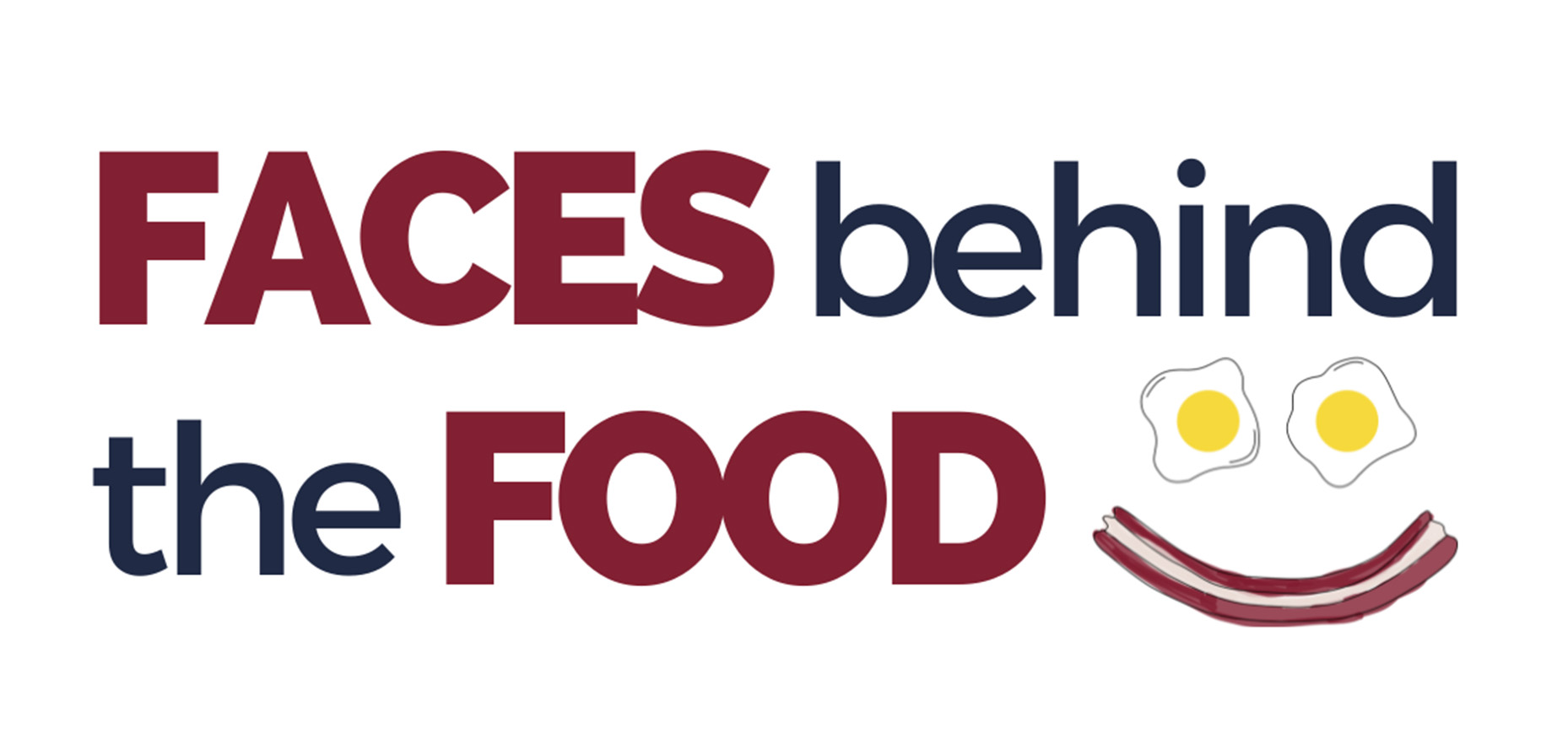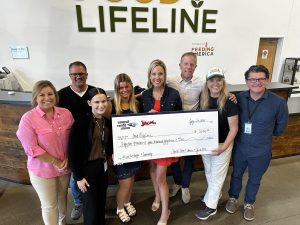 Meat can be one of the most daunting items on our shopping lists. By now, everyone knows the industry is far from ideal, but aside from going vegetarian, people still use meat as a source of protein. In an industry full of jargon and misnomers, it’s difficult (if not impossible) to understand the options offered by traditional grocery stores. Thankfully, there are whole-animal butchers like John Ratliff who are shedding light on the world of meat. He lives in Industry City, has his fair share of “big meat” and shared some hard truths about his home turf.
Meat can be one of the most daunting items on our shopping lists. By now, everyone knows the industry is far from ideal, but aside from going vegetarian, people still use meat as a source of protein. In an industry full of jargon and misnomers, it’s difficult (if not impossible) to understand the options offered by traditional grocery stores. Thankfully, there are whole-animal butchers like John Ratliff who are shedding light on the world of meat. He lives in Industry City, has his fair share of “big meat” and shared some hard truths about his home turf.
Tell me a little about yourself and how you came to run Ends Meat.
I grew up in New Mexico and started cooking when I was 15. Right after I graduated high school in Portland, Oregon, I went to culinary school. After school, I outgrew Portland, moved to Chicago, and went through a phase of fine, upscale dining where I worked in some amazing restaurants. I got tired of fine, upscale restaurants and wanted to try New York in 2008. I worked at an amazing restaurant where Missy Robbins was the chef and another amazing chef, Hillary Sterling, was the head chef. I was her sous chef and made classic Italian dishes, focusing on two- and three-ingredient dishes.
I started making salumi at home. I would finish a shift at the restaurant and then take the leftover raw product from the restaurant home in my backpack on my six-speed bike. I did that for a while and threw a lot of meat in the trash, with some success. Anything I thought was exceptional I brought to friends who were all in the restaurant community. Some people started buying it from me, which became Ends Meat in 2011.

When you work in the restaurant industry, especially in the high-end industry, you have to struggle a lot with sourcing ingredients. I started looking for some remarkable farms that I could base my business on and support. That’s where the whole animal aspect came into play.
In 2011, I rented 1,400 square feet in Greenpoint. I built a wall in the middle and rented the front to a guy who upholsters sofas. On the other side of the wall, I set up a butcher shop.
I brought whole pigs hidden in boxes and acted casual while riding the only freight elevator with other people. I bought a pig every week and a cow every month. I turned them into fermented, dried products. I didn’t sell anything fresh. I started selling wholesale to restaurants. After a few years, I started making some sales, and by the fourth year, my sales were high enough to justify a small bank loan. Then I moved to Industry City. They found out about me, and I did a tasting for the team behind Chelsea Market. They liked what I was doing, so they made me a great offer. I opened here in 2015.
Whole animal cutting is probably the oldest concept in butchery. Tell me what it means to you and why it was important to incorporate it into your business.
In any business where you make a product, you are buying raw material, 100% of it. It’s bad business to throw parts of it away. A lot of people say, “It’s out of respect for the animal,” or that it only happens on a small scale, but that’s wrong. The largest processors in the country are some of the best utilizers of animals in every way. You name it, it gets used, and it turns into a revenue stream for the business. This isn’t about small farms or passion. To me, a whole animal means being able to buy direct from the farm. When you buy direct from the farm and the product only touches your hands before it reaches the consumer, the farm gets the best value for their animal and the consumer gets the best value for their product.
Sustainability is a pretty broad term. When I use it, I mean it in every sense: sustainability for the farm, making sure the soil is as good as possible so the grass can grow; for me, sustainability means producing a product and being able to sell as much of it as possible without wasting anything. It’s not as romantic as respecting the animal. I respect the animal as much as I respect the farm and my customers.
The idea of the company was never to be a cash cow (no pun intended). The goal was always to make ends meet. I had to pay all my bills, farmers and employees. With a name like Ends Meat, I can answer that and really mean it.
You’ve earned your name. Do you also sell lesser-known products that come from animals, such as bone marrow? Do you find that people are interested in the health aspects of such products?
We get bone marrow from the humerus of the shoulder and the femur of the hind legs. We get three animals a week, so we get 12 pieces of bone marrow, and they sell like hotcakes. They have tremendous benefits and are delicious. You can’t replicate bone marrow. When cooked properly, it has the consistency of vanilla pudding and that umami flavor. It’s full of collagen. The beef we work with is 100% grass-fed, and grass-fed beef generally has good nutrients. That comes through strongly in the bones.

Has Ends Meat ever offered game or unusual animals?
It goes beyond the premise of working directly with farmers. If you buy a whole animal, you have to use it whole. If we bought a whole bison or a whole venison, we wouldn’t have enough revenue to justify it. We even struggle to sell our grass-fed lamb from New York State. People are used to lamb from Australia and New Zealand at $3 a pound, and the lamb we buy costs two and a half times as much. We end up selling the chops and making sausage out of the rest, losing money in the process. The whole animal aspect makes it harder for us to be so playful.
There’s a term called “boxed meat,” and that’s what the meat world is all about. 99% of butcher shops buy boxes of meat, and those boxes of meat contain what their customers want to buy. They don’t have to go out of their way to buy things they don’t need. That’s a much better business process. We don’t do that.
There are a lot of misconceptions. Natural means nothing. It means “of this planet.” It’s so hard to find words to describe what we do that other larger conglomerates haven’t used to lie to people. The answer is to have open conversations with people.
Do you think people are asking more questions about the meat industry because they are becoming more aware of its problems?
Our customer base has always wanted to know exactly where their products come from and support a transparent company with solid ethics and consistency. Americans don’t eat a lot of organ meat, so we turned a lot of it into dog food. People spend a lot of money on their dogs.
The grocery chains lie about a lot of stuff. One popular brand has a line of grass-fed animals raised entirely in captivity. Most of it comes from overseas. Any processed ingredient that isn’t pork tenderloin or steak, for example ground beef, sausage, and smoked meats, only has to be 51% of what you claim. It can’t be any other protein, but you could take 51% grass-fed beef and mix it with 49% grain-fed beef and call it grass-fed, according to the USDA. More whole animal stores have opened, but we haven’t seen many customers buying these things.
It’s important to recognize that meat is part of the human diet and will be around for a while. Raising meat this way means beneficial grass that sequesters more carbon than the animals produce. Factory meat production is fucking awful, and I want everyone to know that. Meat production needs to be funded from our farm bill, and there needs to be government support to make regenerative agriculture successful and better protein more accessible.
It always blows my mind that the alternative is highly processed fake meat that takes huge amounts of energy to produce, is highly processed and horrible for us, instead of fixing what we have broken, namely the human digestive system, the environment and the integrity of the animal.
The world of fake meat will never beat the big producers. Three large conglomerates run 95% of the meat production in this country out of Washington, with the best lobbyists money can buy to ensure that the farm bill goes in their favor.
You mentioned that Industry City gave you a great offer when you opened, but what else does it mean to work from there? Why is it different than working on a street corner or in a Smorgasburg?
I’ve never owned a brick-and-mortar store, so it’s hard for me to make a comparison. Industry City’s infrastructure has always protected and supported us. The management is phenomenal. We’ve expanded here four times, and looking back, I don’t know if I could have spent the last nearly ten years in a brick-and-mortar store.
I don’t have partners or investors and I’ve put everything I’ve earned into rebuilding the company. I can’t go to investors and say, “I need $500,000 to open a store,” and I can’t raise capital for a company called Ends Meat that isn’t designed to make money. Industry City is great, but in my situation, they’re too good.

What’s next for Ends Meat?
Since I opened the business, I knew I wanted to get state inspection to sell my salami wholesale nationwide. Four years ago, after the Lower East Side stuff, I was finally able to focus on my state-inspected business. I set up a couple of spaces in Industry City right next to the butcher shop. They’re tiny, but I have no cap on how many people I could sell to: grocery stores, restaurants, or wholesalers. There’s a state inspector here every day. I have to be here at 5:00 a.m. It’s a different world. I see this business slowly taking off, getting space on grocery store shelves, getting commitments from larger wholesalers, and hopefully raising capital and building a larger facility.
I would love to open another butcher shop in a neighborhood where I can be part of the community. I want to support the farms I work with and the best way to do that is to have purchasing power.




